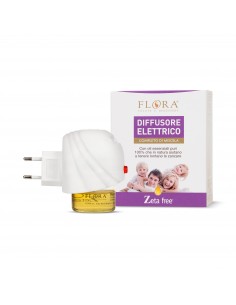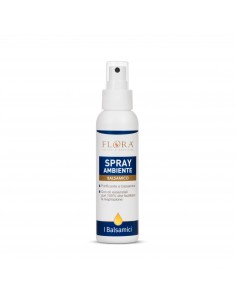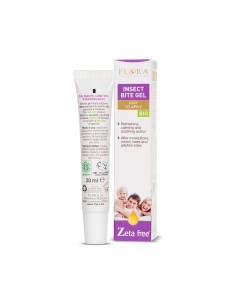Honey from Italian apiaries cultivated in accordance with organic beekeeping standards. It is enriched with Italian propolis, also organic. These precious gifts of the bees act in synergy with the 100% pure, complete and natural essential oils of orange (Citrus aurantium var. dulcis), lemon (Citrus limon), mint (Mentha x piperita and Mentha arvensis), cajeput (Melaleuca leucadendron var. cajaputi), tea tree (Melaleuca alternifolia), mandarin (Citrus reticulata), myrtle (Myrtus communis) and thyme (Thymus vulgaris), which all impart their aroma and benefits.
EMOLLIENT AND SOOTHING BALSAM PLEASURE
- Properties
- Balsamic
- Form
- 85 ml
- Does not contain
- Preservatives, dyes, synthetic substances
8019359026090
2021-05-30
Honey* (Mel, 98.44%), glycerine*, propolis* (Propolis resin - glyceric extract), Demeter orange** (Citrus aurantium var. dulcis - peel, EO), Demeter lemon** (Citrus limon - peel, EO), Demeter peppermint** (Mentha x piperita - all, EO), cajeput* (Melaleuca leucadendron var. cajaputi - leaves and buds, EO), field mint* (Mentha arvensis - all, EO), tea tree* (Melaleuca alternifolia - leaves, EO), mandarin* (Citrus reticulata - peel, EO), myrtle* (Myrtus communis - buds and flowers, EO), Demeter thyme** (Thymus vulgaris - all, EO). Ingredients are sourced from controlled organic* and Demeter biodynamic** farms.
Did you know…
Honey: For many centuries it has been used as a highly nutritional food; in recent years, ancient ways of using it are being rediscovered. In fact very ancient documents present honey as a powerful medicine. As early as 2000 BC there is evidence of honey being used as a medicine for external use. In the ‘Ebers Papyrus,’ dated 1550 BC, honey was used for many preparations, including those for eye health, for application to wounds and abscesses, and even following surgery (such as circumcision). Even the 'Surgical Papyrus,’ a papyrus on Egyptian medicine, mentions the use of honey as a wound dressing. In general, its use is found in all cultures where it is traditionally used for external use, but also for throat, respiratory and intestinal disorders.
Propolis extract: the name propolis derives from the Greek πρόπολις, composed of πρό (pro) in front of, and πόλις (polis) city, i.e. in front of the city; this word, figuratively speaking, takes on the meaning: defender of the city. The term was used by Aristotle and Pliny the Elder in ‘Naturalis Historia’ to refer to the resin processed by bees, who use it to defend their city (the hive) from dangers such as disease and predators. Propolis is one of the oldest used natural substances. As early as ancient Egypt, it was used for mummification (often referred to by the generic name of resin). In Ancient Greece (in the times of Aristotle, Galen of Pergamom and finally the Persian Avicenna), it was used externally as a healing agent for wounds or sores. The use of propolis is widely documented among numerous cultures around the world. The Incas used it to treat febrile illnesses, while in Russia it was a remedy for all problems of the oral cavity, used in cases of caries and inflammation. Propolis was one of the remedies of choice until the 18th Century, when it was used to treat respiratory inflammation, but also sores, insect bites, etc. It then fell into disuse, but has regained its value in the herbalism as a valid adjuvant to promote the functioning of the respiratory tract.
Lemon essential oil: Although lemons are traditionally associated with the Mediterranean basin (when we think of lemons we immediately think of sunny Sicily), its origins actually date back many years to civilizations that settled in the area around the Indus river in the northwestern foothills of the Himalayas. It then travelled to China and then Europe, thanks to the Arabs, Greeks and Italians, who imported lemons initially for ornamental and culinary purposes, and later between the 11th and 13th Centuries, because of its anti-inflammatory and disinfectant properties it became being widely documented in scientific treatises for use in treating ailments.
Field mint and peppermint essential oil: Mint is one of the plants that have always played an important role, and to which numerous therapeutic and medicinal properties have been ascribed. The Egyptians and Greeks used it for its anti-nausea properties, and as a digestive aid. Pliny the Elder extolled its properties, saying that its fragrance was able to, "excite the soul and stimulate the appetite." The Salerno Medical School used it extensively as a vermifuge and even Pietro Andrea Mattioli, a herbalist from the 1500s wrote, "Mint has a certain bitterness in it, with which it kills worms". Its properties are so many and have always been appreciated that in the 11th Century Walahfried Strabo, a German abbot, theologian, and poet wrote: "If a man wanted to enumerate all the qualities, types and names of mint, he would also have to know how many fish swim in the Red Sea or how many thunderbolts Vulcan, the fire god of Lemnos, hurls into the air from the enormous mouth of Etna."
Cajeput essential oil: Kaji-puti means ‘white tree’ in Malay, indicating the white color of the bark of the tree from whose tops this essential oil is obtained. Originally from Vietnam, it only arrived in the West in the 18th Century following the Dutch conquest of the Moluccas. In its native land, cajeput essential oil has always been used in folk medicine for therapeutic purposes for infections, from intestinal to skin, or burned the branches to ward off contagions during epidemics. The oil was traditionally used by rubbing it on the forehead to combat headaches, ear and toothaches. It was also used to treat skin problems such as ulcers, acne, and psoriasis.
Tea tree essential oil: Known since ancient times for its effectiveness and wide range of uses, the tea tree was called 'the pharmacy in a bottle' by the Australian Aborigines as its leaves were used to treat skin infections and wounds. Its name comes from the fact that when Captain James Cook and his men (who landed in Australia in 1770) wanted a refreshing tea, they used the leaves of this tree. The essential oil obtained from the leaves of this plant is very effective and, if applied to the skin, strengthens and regenerates it thanks to the high presence of a molecule called terpinen-4-ol, an alcohol which, due to its chemical characteristics, has strong antimicrobial properties. The WHO has approved the topical use of this valuable essential oil.
Myrtle essential oil: myrtle has been known for centuries for its beneficial properties, which can help with indigestion, respiratory problems, and urinary tract infections. In popular tradition, myrtle was used to prepare natural remedies for cystitis or gum disease.
Thyme essential oil: The Egyptians used it for embalming, the Romans used it to preserve food, the Greeks saw it as a symbol of courage, so much so that soldiers rubbed it on their chests for strength and vigour. Hippocrates recommended it for treating skin diseases and respiratory conditions. Thyme essential oil, obtained by distillation of the flowering tops, is very useful in combating skin irritations and problems, as it helps to strengthen, purify, and regenerate the epidermis.
- Organic honey-based food certified by CODEX control body
- Italian honey
- Italian propolis
- 100% pure essential oils of orange, lemon, mint, cajeput, tea tree, mandarin, myrtle, thyme
- Agriculture EU 98.47%, non-EU 1.53%
- Made with ZERO impact renewable energy
Take half a teaspoon of honey several times a day, on its own or in a herbal tea. Stir before use.
Average values for 100 g
- ENERGY 1445 KJ / 340 Kcal
- FATS 0 g
- of which saturated fatty acids 0 g
- CARBOHYDRATES 84 g
- of which sugars 84 g
- PROTEIN 0 g
- SALT <0.01
The salt content is due exclusively to the naturally contained sodium.
No reviews


















































